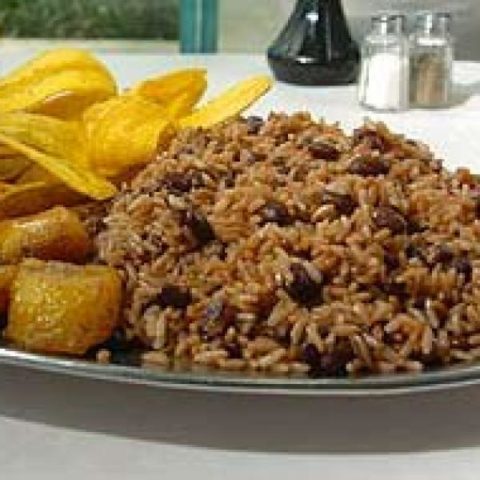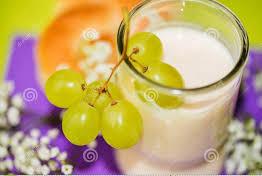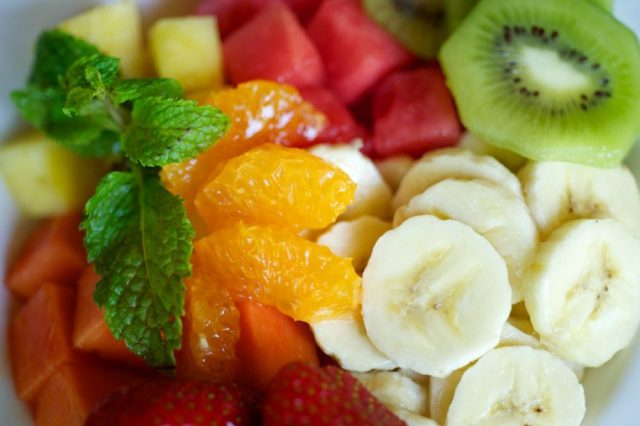The gastronomy of Costa Rica, called Creole cuisine, is influenced by three variants: the aboriginal, the Spanish and the African. The main contributions of indigenous gastronomy are tamales, potatoes, corn, cassava and squash. The Spanish introduced beef and wheat, which is why a mestizo kitchen began to be created.
Costa Rican food is flavorful rather than spicy. The national dish is Gallo Pinto, a dish of black beans and rice with onion and cilantro. This meal is traditionally served for breakfast, with eggs, omelets, and custard, a kind of sour cream. As you make your way across the country, you’ll soon discover the variety of fruits and vegetables available.
Plantains are served abundantly throughout the popular “casados”. A bowl of rice, red or black beans, and a choice of meat, chicken or fish and vegetables or salad. Try the many empanadas, pastries filled with spiced chicken or meat. Also gallos, which contains wheat or corn flour tortillas filled with meat, cheese or beans. Traditional tamales, served for Christmas, also available year-round. They consisted of potatoes and corn steamed in a banana leaf and filled with meat and vegetables and seasoned in a particular way. Do not forget to try the “ceviche”, a dish originally from Peru. It has raw fish cooked in lemon juice with ginger, onion and coriander served with hot chili sauce.
Costa Rican Food: Keeping it Authentic and Delicious
The reason that Costa Rican food tastes so fresh and healthy to foreigners is that…it is! Food in Costa Rica is mild, not too spicy, and usually made up of ingredients that are naturally unique.
Here we present the most famous Tico Dishes
Casado
It’s called Casado, and it`s the family meal sought on any Tico table or kitchen counter during lunchtime. There is no eternal commitment to the casadodish as it varies according to the tastes of each home. It is made mostly of rice and beans, a slice or two of sweet fried plantains, vegetables, cabbage salad, a tortilla, and the main course; Usually your choice of a chicken, fish, pork, or vegetarian steak with some fresh avocado, eggplant, or white cheese.
Chicken with rice
Arroz con Pollo is a favorite dish throughout Central America, and in Costa Rica, it’s a birthday party favorite that can feed the masses. It consists of a mixture of yellow rice, peas, carrots, corn and chicken strips. Costa Rican Arroz con Pollo is colored with Annatto and is best served with French fries or tortilla chips.
Gallo Pinto

Gallo Pinto, which means spotted rooster, is a favorite Costa Rican food by far, so good it’s served everywhere after 10:00 am with a cup of coffee. What makes it so good if it’s just mixed rice and beans? It is all in the mix, and like the Casado, each Costa Rican has their own way of preparing Gallo Pinto.
Gallo Pinto can come with plantains, eggs, tortillas, and fresh sour cream. Some use copious amounts of cilantro while others use onions and garlic. But what makes it so unique is the special sauce: Salsa Lizano.
Lizano Sauce: Favorite Seasoning
Costa Rica’s favorite condiment, thanks to the Lizanocompany. This brown sauce goes well with anything, white rice, eggs, toast, meat, beans, anything you could add salt to. Lizano’s sauce, so delicious and widely used in Costa Rica, has become part of the country’s identity.
With Water or Milk

When it comes to drinks, Costa Ricans like to take advantage of all the varieties of tropical fruits that grow in the country. There are two ways to prepare these fruit drinks, with milk and without milk. Fruit drinks with milk are smoothies, but not all fruit goes well with milk. The favorite fruit shakes in Costa Rica are blackberry, soursop, strawberry, banana. In addition, there is a wide variety of fruit drinks in water (without milk): Cas (endemic guava), pineapple, mango, cashew, Guanabana and many others.
Costa Rican Sweets
Costa Ricans have a desire for sweetness and to put loads of sugar in a nutritious drink that it doesn’t really need. They tend to enjoy sweet dairy-based desserts such as tresleches (three milks) and arroz conleche (rice with milk). Also, tresleches (three milks) is a very sweet soft cake that uses three types of dairy products: evaporated milk, condensed milk, and whipped cream.
Delicacies of the TicoCaribbean
Much interesting food is found on the Caribbean side. Much of the cuisine is Jamaican influenced. You will love the chicken and the delicious rice with coconut and beans, and the famous Rondon, a spicy fish stew made with the catch of the day! Fruits are particularly plentiful on the Caribbean side as well, and you’ll find endless fresh fruit “shakes” of your choice. Caribbean food is reminiscent of the essence of the Caribbean, full of flavor and color.
Foreign type of cuisine
Today in San José and the main points of tourists, there is an infinite variety of traditional and international cuisine. Including Italian, French, Spanish, Chinese, Japanese that are easy to find everywhere across the country. Sushi has proven to be very popular since it was introduced to the country, while Indian food is still a growing trend. Pizzas and pasta, a tapas bar and traditional French cuisine are of excellent quality. The best chefs, seduced by the beauty of the country and the increasing demands of tourists and residents alike, have settled here to stay and the selection of restaurants has become something extraordinary.

Other delicacies
Costa Rica produces some of the best coffee in the world, however Costa Ricans do not like strong coffee. Cappuccino or espresso coffee are also available nationwide. Fruit juices come as “soft drinks” and “Natural juices” and “shakes”; maracuyá (passion fruit), pineapple, mango, banana, guava, carambola, and watermelon are just a few of the many fruits available here.
Lastly, the wine list has grown here in Costa Rica. Not only will you find an extraordinary selection of elegant Cabernet, Syrah, and Merlot from Chile and Argentina, but current wines from France, Italy, Spain, South Africa, California, and Australia are commonplace in every supermarket and restaurant.
Costa Rican cuisine uses different spices and aromatic herbs such as coriander, cumin and achiote. As for the desserts, these are made with ingredients such as milk, sugar cane, eggs and some fruits and vegetables such as cassava, chiverre and squash.

